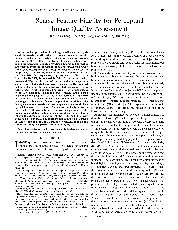摘要
The prediction of an image quality metric (IQM) should be consistent with subjective human evaluation. As the human visual system (HVS) is critical to visual perception, modeling of the HVS is regarded as the most suitable way to achieve perceptual quality predictions. Sparse coding that is equivalent to independent component analysis (ICA) can provide a very good description of the receptive fields of simple cells in the primary visual cortex, which is the most important part of the HVS. With this inspiration, a quality metric called sparse feature fidelity (SFF) is proposed for full-reference image quality assessment (IQA) on the basis of transformation of images into sparse representations in the primary visual cortex. The proposed method is based on the sparse features that are acquired by a feature detector, which is trained on samples of natural images by an ICA algorithm. In addition, two strategies are designed to simulate the properties of the visual perception: 1) visual attention and 2) visual threshold. The computation of SFF has two stages: training and fidelity computation, in addition, the fidelity computation consists of two components: feature similarity and luminance correlation. The feature similarity measures the structure differences between the two images, whereas the luminance correlation evaluates brightness distortions. SFF also reflects the chromatic properties of the HVS, and it is very effective for color IQA. The experimental results on five image databases show that SFF has a better performance in matching subjective ratings compared with the leading IQMs.
